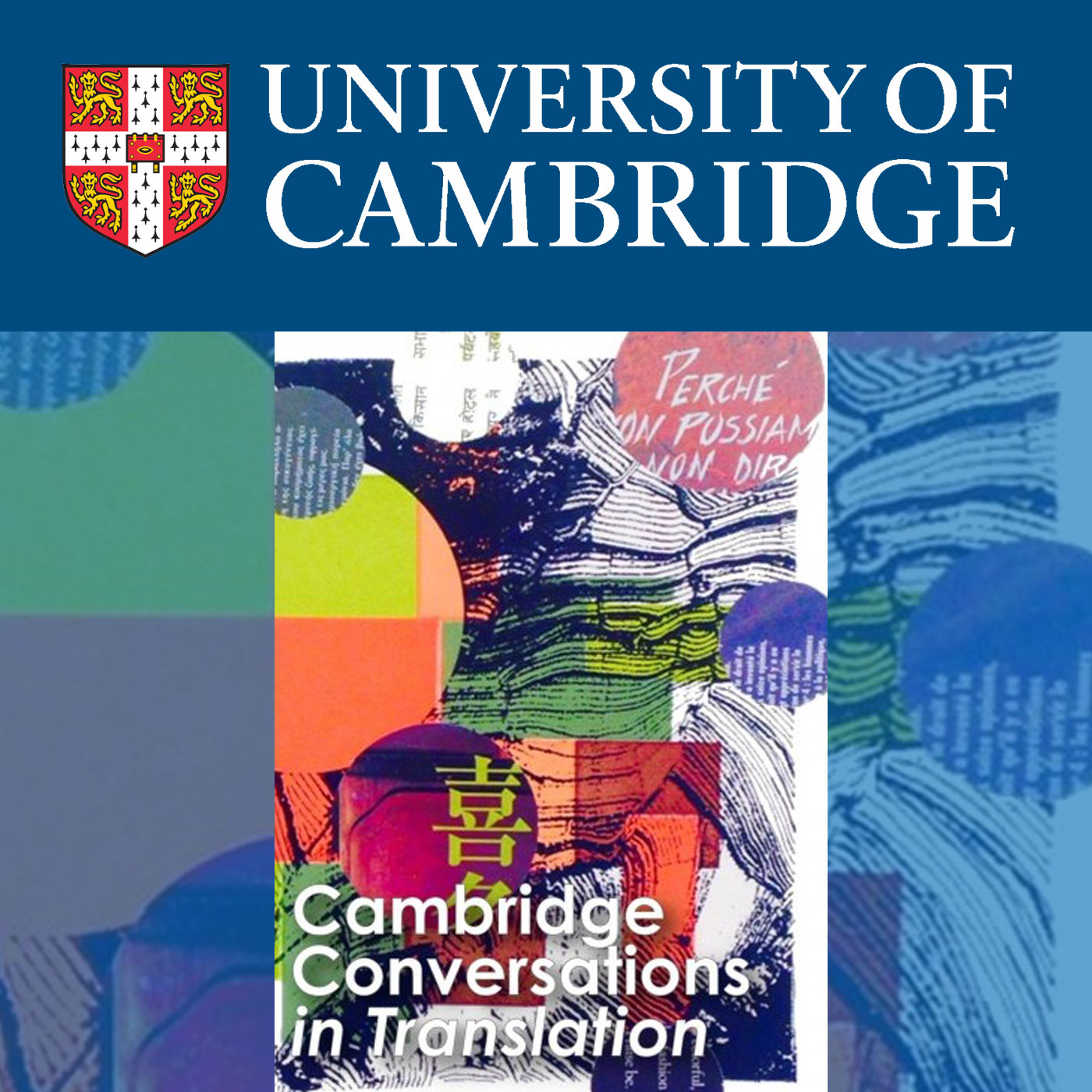Cambridge Conversations in Translation - 26 May 2017 - Translation and Multimodality - Session One
Duration: 1 hour 51 mins
Share this media item:
Embed this media item:
Embed this media item:
About this item

| Description: |
Session 1
Gunther Kress (UCL)-Translation in a social semiotic multimodal approach: from bottom up, right to left, inside out In my talk I try to imagine and sketch what a social semiotic and multimodal approach to translation might be about, what it might be like, what it might encompass -- and how it might differ from a more traditional approach. As I assume that many in the audience will have no knowledge of what either Social Semiotics or Multimodality are, I will briefly say something about these two topics. Using an entirely conventional definition of 'translation' -- "a carrying across, removal, transporting; transfer of meaning" -- I will explore how the terms in that definition might be thought about in a Social Semiotic / Multimodal approach. One part of my interest is the issue of “naming”: that is, to what extent the existing terms continue to be useful / useable or not -- terms such as language, transcription, representation, transformation. The other part of my interest -- in relation to Multimodality specifically -- is the question of the availability of apt notational resources for the process of “transporting” of meaning. The third point is the very question of “transporting meaning” itself: that of course is not new in discussions of translation, but might be worth looking at from a social semiotic perspective. |
|---|
| Created: | 2017-06-02 09:47 |
|---|---|
| Collection: | Cambridge Conversations in Translation |
| Publisher: | University of Cambridge |
| Copyright: | Glenn Jobson |
| Language: | eng (English) |
| Distribution: |
World
|
| Keywords: | Conversation and Translations; CRASSH; |
| Explicit content: | No |
| Abstract: | One-day Event
With this event we intend to take a bolder interdisciplinary stance and to engage with recent research that explores intersemiotic translation in its most innovative forms. Since Jakobson’s definition as “an interpretation of verbal signs by means of signs of non-verbal sign systems” (1959) the expression intersemiotic translation has increasingly been used to designate relations among different signifying systems in general (literature, cinema, comic strips, dance, music, sculpture, painting, video art, and others). Further perspectives have recently been furnished by multimodality, defined as the “use of several semiotic modes in the design of a semiotic product or event” (Kress and Van Leeuwen 2001), where a mode is ‘a socially shaped and culturally given resource for making meaning’ (Kress 2010). The nature of the relationship between modes (i.e. images, sound, gestures, body posture, the use of space), how they interact, etc. contribute to the creation of meaning on a multimodal text. One of the aspects often investigated is how these relations are retained or transformed in the process of translation. The increasing centrality of electronic, audio-visual and i-based (i-phone, i-pad, etc.) forms of communication has made audiovisual translation an important area of both research and practice, which often overlaps with multimodal translation (Chiaro 2008). If the simultaneous engagement of more than one sense faculty in communication is nothing new, multimodality has undoubtedly acquired new forms in our digital era, and has extended to a wider spectrum of genres. Translation is increasingly part of contemporary literary and artistic experimentation, where it becomes an integral component of the entire meaning-making process by “performing biliteracy across both linguistic and semiotic boundaries” (Lee 2013). So art installations ‘translate’ poetry through their design and space arrangement, and multimedia bilingual poetry collections with the source text only as audio track and options for simultaneous multilingual and/or multivisual fruition challenge standard notions of translation and literary experience. Further experiments in multimodal translation have involved dance, theatre and Sign Language, whereby English (and Spanish) is translated into British or International Sign Language, which are in turn adapted into choreography, in a fluid intersemiotic dialogue and negotiation of meaning (de Senna 2014). New studies concerned with intersemiotic/multimodal translation have looked at the ways contemporary choreographers have translated syntactic and temporal features of some modernist writers into singular movements, or movement sequences, sound objects etc. (Aguiar and Queiroz 2015); others have explored the philosophical and aesthetic implications of the ‘untranslatability’ of the logographic features of the Chinese script into Western logocentric meaning, and how contemporary Chinese artists have attempted to ‘translate’ Western values or their artistic representations (e.g. mysticism/crucifixion) through the Chinese characters in their paintings (Hass 2016). Finally, the long-standing debate surrounding the translation of poetry, both from a theoretical and a pragmatic standpoint (Holmes 1970, 1988; Lefevere 1975, 1992; Bassnett 1980; Hermans 1985; Eco 2003; Jones 2011; Reynolds 2011; Drury 2015) has recently been complicated by competing perspectives, many of which advocate the importance of factors that are predominantly neither literary nor linguistic, as in the case of some ‘slam poetry’ or ‘spoken word’ artists. Some of these supplementary factors become more conspicuously manifest when poetry and translation are situated in the context of performance – that is, when the reading of poetry ceases to be merely a silent cognitive activity, and involves some kind of rendition. There are the usual subtle distinctions to be made here between performance and performativity, yet any enacting of a so-called ‘performance translation’ is a distinctive activity, and one which can powerfully establish or destabilise important linguistic identities (Sidiropoulou 2004). |
|---|---|

